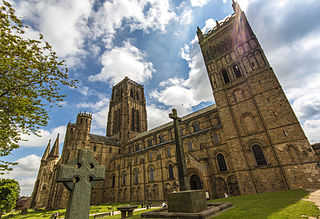The Legend of the White Stag
Durham Cathedral is one of the most iconic landmarks in the United Kingdom. It is a symbol of the country’s rich history and cultural heritage. The cathedral has been standing for over 900 years and has witnessed many significant events in British history. From the Anglo-Saxon legend of the White Stag to modern-day exhibitions, Durham Cathedral has a fascinating story to tell.
Early Days: The Anglo-Saxon Church
The story of Durham Cathedral begins in the 7th century when St. Cuthbert, a monk, and bishop, established a monastery on the site. The monastery was a small wooden structure that served as a place of worship for the local community. Over time, the monastery grew in size and importance, and by the 10th century, it had become one of the most significant religious centers in the north of England.
Norman Conquest: Building a Cathedral
In 1066, William the Conqueror invaded England and brought with him a new style of architecture. The Normans were known for their grand cathedrals, and they set about building a new cathedral on the site of the old monastery. The construction of Durham Cathedral took over 40 years to complete, and it was consecrated in 1133.
Romanesque Architecture: A Masterpiece
Durham Cathedral is a masterpiece of Romanesque architecture. The cathedral’s design is characterized by its rounded arches, thick walls, and decorative carvings. The cathedral’s most impressive feature is its central tower, which stands at over 200 feet tall. The tower is one of the tallest in Europe and is a testament to the skill of the cathedral’s builders.
The Shrine of St. Cuthbert: A Pilgrimage Site
Durham Cathedral became a popular pilgrimage site in the Middle Ages due to the presence of St. Cuthbert’s shrine. St. Cuthbert was a revered figure in the north of England, and his shrine attracted thousands of pilgrims each year. The shrine was destroyed during the Reformation, but its memory lives on in the cathedral’s history.
The Reformation: A Time of Turmoil
The Reformation was a time of great turmoil for Durham Cathedral. The cathedral was stripped of its Catholic decorations, and many of its treasures were destroyed. The shrine of St. Cuthbert was dismantled, and his remains were hidden to protect them from destruction. The cathedral’s fortunes declined, and it fell into disrepair.
Restoration and Renovation: The 19th Century
In the 19th century, Durham Cathedral underwent a significant restoration and renovation. The cathedral was restored to its former glory, and many of its treasures were recovered. The shrine of St. Cuthbert was rebuilt, and his remains were returned to the cathedral. The cathedral became a symbol of the revival of the Anglican Church in the north of England.
World War II: A Cathedral in Danger
During World War II, Durham Cathedral was in danger of being destroyed. The cathedral was located near a major military target, and it was at risk of being hit by bombs. The cathedral’s treasures were evacuated to a safe location, and the cathedral was used as a military hospital. Despite the danger, the cathedral survived the war intact.
Modern Day: A Living Cathedral
Today, Durham Cathedral is a living cathedral that continues to play an important role in the community. The cathedral is still a place of worship, and it hosts many events throughout the year. The cathedral is also a popular tourist attraction, and it attracts visitors from all over the world.
The Cathedral’s Treasures: Art and Artifacts
Durham Cathedral is home to many treasures, including art and artifacts from its long history. The cathedral’s collection includes medieval manuscripts, ancient relics, and works of art by famous artists such as Van Dyck and Canaletto. The cathedral’s treasures are a testament to its rich history and cultural heritage.
Exhibitions and Events: A Cultural Hub
Durham Cathedral is not just a place of worship and a tourist attraction; it is also a cultural hub. The cathedral hosts many exhibitions and events throughout the year, including concerts, lectures, and art exhibitions. The cathedral’s events are a way of bringing the community together and celebrating the cathedral’s rich history.
Durham Cathedral’s Enduring Legacy
Durham Cathedral’s enduring legacy is a testament to its importance in British history and culture. The cathedral has survived wars, revolutions, and centuries of change, and it continues to stand as a symbol of the country’s rich heritage. Durham Cathedral is a living cathedral that continues to play an important role in the community, and it will undoubtedly continue to do so for many years to come.




























